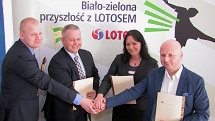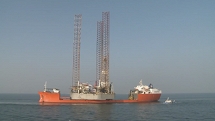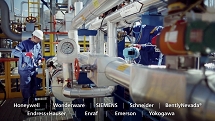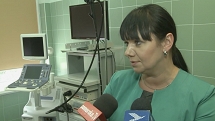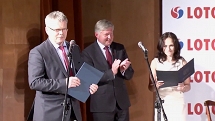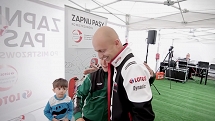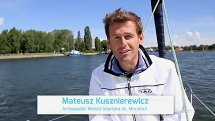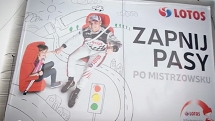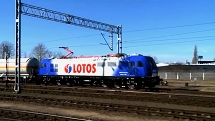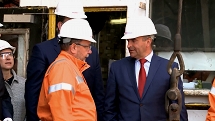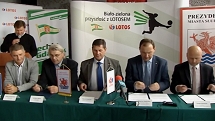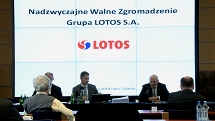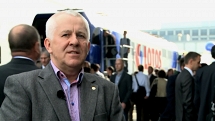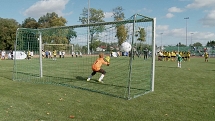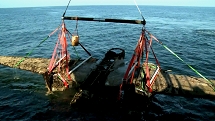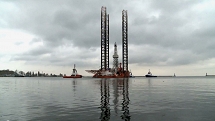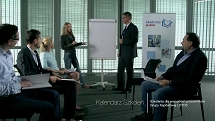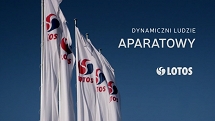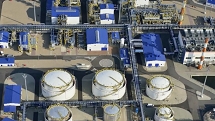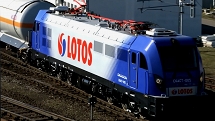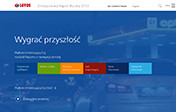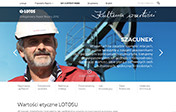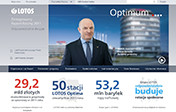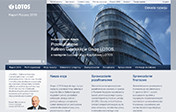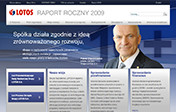-
Financial information
The past year ushered in a series of challenges for the companies in the fuel sector. The decisions made by us have demonstrated that we are able to take rapid steps to adapt to a demanding environment and ensure the desired profitability for our projects.
-
Segment performance
The segmental management model we have implemented enhances management efficiency, delivering cost and revenue synergies across the organization.
-
Letter from the Vice-President of the Board
2014 ushered in a series of challenges for the companies in the fuel sector. The decisions made by the LOTOS Group have demonstrated that we are able to take rapid steps to adapt to a demanding environment and ensure the desired profitability for our projects.
-
Business environment
The key factor that had a strong impact on both the global and Polish petroleum markets in 2014, with significant consequences for the LOTOS Group’s performance, was the price of crude oil, which also determined the price of petroleum products.
-
Strategic objectives
The LOTOS Group’s Strategy is designed to strengthen our position as a strong, innovative and efficient business which plays a major role in ensuring national energy security.
-
Business model
Our operations consist in crude oil production and processing, as well as wholesale and retail sale of petroleum products, among which are: fuels (unleaded gasoline, diesel oil and light fuel oil), heavy fuel oil, bitumens, aviation fuel, naphtha, propane-butane LPG and base oils.
-
Risk and opportunities
At the LOTOS Group, we identify a range of diverse risks, which may affect all areas of our business. The key risks in terms of their impact on our operations are the financial risks as well as risks affecting the exploration and production area. In the analysis of the risks, we also factor in issues related to sustainable development.
-
Key data 2014
With revenue of ca. PLN 28.5bn in 2014, we rank fourth in the group of 500 largest businesses in Poland.

Operational (refining) segment
1. Operational risks related to the refinery
Technical risks related to possible occurrence of serious industrial failures or irreparable damage to infrastructure
Any materialisation of this risk may seriously affect operations and financial performance of Grupa LOTOS by necessitating additional expenditure on repair or replacement of installations or equipment, or by causing interruptions and interferences in the production process. We implement a number of measures to mitigate the risk. We prioritise installations and equipment based on their criticality. The technologies and equipment which we use are in line with the Best Available Techniques (BAT). We have automatic emergency shutdown systems in place to prevent uncontrollable escalation of incidents, and our process units are also fitted with their own safety and fire protection systems. In addition, in order to raise standards for assessment of the technical condition of high-pressure installations and equipment, we implemented − in cooperation with the Office of Technical Inspection − the Risk-Based Inspection methodology in selected areas. Work is also under way on implementing the Risk-Based Work Selection methodology, which supports planning maintenance work on the basis of risk analyses prepared earlier for individual units. Having implemented these methodologies, we will be able to manage the Company’s infrastructure in a better and more efficient way.
Work safety risk
Work safety risk relates to potential occurrence of accidents and other threats involving exposure of employees to dangerous and onerous factors. We continuously improve and implement new technical and organizational measures in order to ensure safe working conditions for anyone visiting the premises or working there for the Company. Grupa LOTOS’ internal requirements in this respect are communicated to our trading partners via a dedicated website 'Grupa LOTOS’ Requirements for Contractors’. Relevant rules of conduct are regularly monitored for compliance, for instance during OHS inspections and supplier audits, and post-inspection requirements are enforced. In addition, we take a number of initiatives to raise the employees’ awareness of safety standards and to encourage them to observe these standards at work. (See more)
Risk related to legislative changes with respect to REACH
A new Annex XIV to the Regulation on Registration, Evaluation, Authorisation and Restriction of Chemicals (REACH) has been in effect since August 21st 2014. Among substances that require authorisation, the Annex lists EDC (1,2-Dichloroethane), a solvent which is used by Grupa LOTOS. This means that in order to be able to use EDC after November 2017, the Company will need an authorisation. If such authorisation is not received, the Company will not be able to perform the process in which this solvent is currently used. In order to minimise the probability of this risk materialising, we have launched a project with a view to preparing the required documentation to apply for an authorisation to use EDC. We are cooperating with the EDC DU consortium, an association of downstream users of the EDC solvent. Apart from that, we also plan to modernise the installations of our Oil Unit to ensure that they comply with all the mandatory technical and legal requirements enabling further use of the EDC.
2. Environmental risks
Risks related to carbon (CO2) emission caps
Risks related to CO2 emission limits involve an increase in prices and insufficient allocation of CO2 emission allowances, which would force the Company to incur additional costs to purchase allowances on the market to cover the deficit. 2014 was another period of intense activity for the EU Emissions Trading Scheme and its participants. In January, the European Commission published a package of documents concerning EU’s strategy beyond 2020, setting three new targets on Europe’s way to a low-carbon economy:
- reduction of greenhouse gas emissions by at least 40% (compared with 1990 levels),
- increase in the share of renewable energy in total energy consumption to at least 27%,
- improvement of energy efficiency by at least 27% relative to future energy consumption forecasts.
In line with the Commission’s proposal, the main instrument to achieve these targets should be a reformed ETS, working to reduce the surplus of CO2 emission allowances built up in recent years to spur a growth in their prices. However, structural changes must be made to the ETS to put in place a permanent solution for balancing of the supply and demand. The Commission has proposed that a market stability reserve (MSR) of allowances should be built at the beginning of the next trading period in 2021, but the date of MSR’s entry into force is still being debated by the European Parliament. The discussions and negotiations related to the proposed reform of the EU ETS commenced in autumn 2014 and will continue in 2015. A temporary solution consisting in postponing the auctioning of a part of CO2 allowances to stimulate an increase in their prices (back-loading) was agreed in February 2014. The first auction with allowance volumes reduced as part of the back-loading mechanism was held in March last year. The back-loading and the European Commission’s legislative work on the proposed reform led to an increase in the prices of allowances in 2014.
The volume of free allowances allocated to Grupa LOTOS under National Allocation Plan III is not sufficient to cover the forecast emissions from the Company’s existing and planned installations, which amount to an average of 1,779,653 annually in 2013−2020. In 2014, as part of the National Allocation Plan, Grupa LOTOS received additional free allowances in respect of its new projects, as a result of which its average annual allowance volume until the end of the trading period reached 1,435,242. Given the changes already in effect as well as the planned ones, Grupa LOTOS is exposed to the risk of incurring higher costs to purchase CO2 allowances required to cover the deficit. Moreover, it is uncertain whether the Company will obtain any free allowances in respect of other new projects it is planning.
With a view to reducing emissions and the need to purchase additional allowances, we implemented a number of investment projects which enabled us to considerably reduce CO2 emissions from our production units and CHP plant relative to 2013. (See more)
Risks related to the need to obtain new or amend existing permits
Grupa LOTOS is required to operate under the terms of an integrated permit obtained for installations whose operations − due to their nature or scale − may lead to significant pollution of the environment as a whole or of its individual components.
In 2014, we applied for amendment of the integrated permit regulating the Company’s operations, following extension of the infrastructure for unloading rail cars, construction of a hydrogen recovery unit, changes in the types and volumes of emissions from one of the emission sources, and changes in land plot boundaries and numbers caused by new investment projects carried out on the refinery’s premises. Legal regulations regarding environmental protection and the use of the environment by companies are subject to relatively frequent changes. The Act of July 21st 2014 amending the Polish Environment Protection Law implemented Directive 2010/75/EU of the European Parliament and of the Council on industrial emissions (known as the IED Directive). In 2014, the new regulations imposed a new requirement that an application for an integrated permit or amendment of an existing integrated permit must be accompanied by a baseline report containing information on contamination of the soil and water environment with hazardous substances. In December 2014, Grupa LOTOS, as the first company in the Province of Gdańsk, filed such a report as an attachment to the application for amendment of its integrated permit, and in January 2015 the Marshal Office of the Province of Gdańsk issued a decision amending the existing integrated permit. In order to reduce the risk associated with the process of obtaining any requisite permits or decisions, the required application documentation is prepared well in advance, in consideration of the risk that administrative proceedings may last longer than expected. In addition, monitoring of both Polish and European Community laws and regulations allows the Company to make early adjustments in order to comply with any new regulations.
Risks related to compliance with new regulations on the implementation of Best Available Techniques (BAT)
Grupa LOTOS’ installations requiring an integrated permit should meet the BAT requirements, as specified in the BAT Reference Notes (BREFs) or directly in the applicable laws as well as other technical specifications and standards. The BAT Reference Notes serve as recommendations, but the adaptation of installations, as well as relevant technologies, procedures and practices, to the BAT requirements is an important condition for obtaining an integrated permit. In accordance with the Industrial Emissions Directive, compliance with the so called BAT conclusions is the reference for setting integrated permit conditions and for determining the admissible emission levels. On October 9th 2014, a European Commission Implementing Decision establishing BAT conclusions for the refining of crude oil and gas in accordance with the IED was published. The new requirements relating to BAT conclusions are more stringent, necessitating significant capital expenditure to ensure compliance. There is a risk that some of Grupa LOTOS’ units or installations may not be ready to comply with the new requirements by the deadlines set out in the BAT regulations, and investment processes will need to be launched to adapt them.






